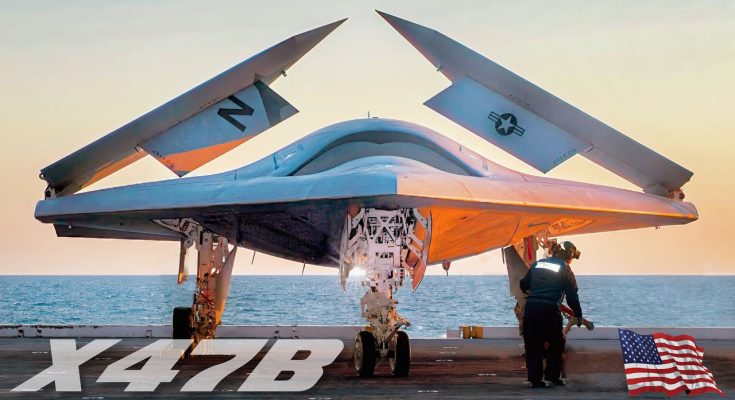The U.S. Navy’s X-47B, an advanced unmanned aerial vehicle (UAV), has become a significant symbol of technological advancement in military aviation, and recent developments have led to claims that it has “shocked” both Russia and China. While the X-47B itself may not be directly responsible for causing international panic, its capabilities and potential role in future warfare have sparked notable interest and concern from global military powers.
The X-47B’s Development and Capabilities
The Northrop Grumman-built X-47B was developed as part of the U.S. Navy’s Unmanned Combat Air System (UCAS) program. Its design is unique, featuring a stealthy airframe, advanced avionics, and the ability to operate from aircraft carriers. This unmanned fighter jet is a prototype meant to test the feasibility of autonomous strike missions in complex combat environments. The X-47B made history in 2013 when it became the first unmanned aircraft to land on an aircraft carrier, showcasing the potential of unmanned systems to operate alongside crewed aircraft in a military context.
The X-47B is notable for its sleek, low-profile design, which reduces its radar cross-section, enhancing its stealth capabilities. It is capable of carrying out both surveillance and strike missions, potentially reducing the risks to human pilots while simultaneously offering high-precision strikes in contested environments. Although it is a prototype and not yet in full operational service, its successful tests have demonstrated the feasibility of autonomous, carrier-launched UAVs in a combat setting.
Why It Has Shocked Russia and China
The significance of the X-47B to military observers in Russia and China lies in its potential to transform modern warfare. Both countries have long been focusing on developing advanced aerospace and naval capabilities, and the rise of unmanned aerial vehicles in military operations threatens to disrupt traditional models of air combat and military strategy.
For Russia, the X-47B’s stealth capabilities could serve as a deterrent to their military assets. The Russian military has historically prioritized its manned aircraft and air-defense systems. However, the potential for autonomous, stealthy UAVs to operate undetected poses a strategic challenge. Additionally, the X-47B could be part of a larger trend in which unmanned systems take over roles traditionally held by manned aircraft, reducing risks to pilots while maintaining operational effectiveness.
China, too, has been ramping up its investments in unmanned aerial vehicles and has taken note of the X-47B’s potential implications. China’s growing interest in developing advanced air, sea, and cyber capabilities is reflected in its military doctrine, which includes a push for AI and autonomous systems. The X-47B represents a form of military technology that could rival China’s own UAVs, raising questions about how the balance of power in the Indo-Pacific region might shift. Furthermore, the X-47B’s successful integration into the U.S. Navy’s carrier fleet underscores a significant technological leap, as China’s own naval forces are working to improve their ability to project power globally.
Global Implications of the X-47B
The advent of UAVs like the X-47B also has broader geopolitical implications. While its autonomous flight capabilities and stealth features make it an invaluable asset for U.S. military strategy, its development could signal a future where autonomous systems dominate military combat. The use of unmanned aircraft reduces human casualties and opens the door to innovative strategies in warfare. However, the strategic calculus for other countries, such as Russia and China, must now consider the development of similar technologies or countermeasures to defend against such threats.
The fear or “shock” expressed by Russia and China likely stems from the potential for the X-47B to disrupt existing power structures. As autonomous systems evolve and new capabilities are developed, these countries must adjust to new forms of warfare that rely less on traditional force projection and more on high-tech, stealthy, and unmanned systems.
In conclusion, the U.S. Navy’s X-47B Stealth Strike Fighter is more than just an impressive piece of military hardware—it represents a shift toward a new era of combat that has drawn the attention of global powers. While it may not have “shocked” Russia and China in the literal sense, the development and potential deployment of this unmanned system certainly signal a technological shift that could shape the future of military operations.



